Here is the problem I am stuck on.
The lamp starts out as an open circuit. Then capacitor charges up and eventually the voltage \$v\$ across the lamp raises. When the voltage across the lamp exceeds a “striking voltage threshold \$V_u\approx77\,\text{V}\$” the “gas ionizes and becomes a conductor with a resistance of about \$R_B\approx10\,\text{kΩ}\$.” The current through the lamp is larger than the current through the resistor from the battery, so the voltage on the capacitor decreases and so does the voltage of the lamp. As soon as the voltage across the lamp decreases to a value below the “sustaining threshold \$V_D\approx35\,\text{V}\$” the gas loses its ionization and the lamp “turns off” and becomes an open circuit again. The “voltage of the battery is \$V_S=92\,\text{V}\$.
So after the initial transient from 0 V the voltage across the capacitor oscillates between the two thresholds and the lamp flashes.
Here is the graph of how the system oscillates:

So, you are given:
- \$R=1.5\,\text{MΩ}\$
- \$C=1.0\,\text{μF}\$
- striking voltage threshold \$V_u\approx 77\,\text{V}\$
- ionized gas resistance \$R_B\approx 10 \,\text{kΩ}\$
- sustaining threshold \$V_D\approx 35\,\text{V}\$
- voltage of the battery \$V_S=92 \,\text{V}\$.
And asked to find:
How much time, in seconds, does it take for the capacitor to charge from the sustaining threshold to the striking threshold
How much time, in seconds, does it take for the capacitor to discharge from the striking threshold to the sustaining threshold?
What is the duty cycle of the lamp? (The duty cycle is the ratio of the time it is lit to the total time.)
There are also the answers to this problem (see below) but mine differ from them and here is what I don't understand:
- Why is there even a \$V_D\$ term in the \$t_1\$ equation? I tried applying a node method and then solving differential equation for t but got different answer.
- Same question as the first one.
- Why isn't lamp's duty cycle expressed as \$t_2-t_1/t_2\$? The time the lamp is lit is \$t_2-t_1\$ isn't it?


